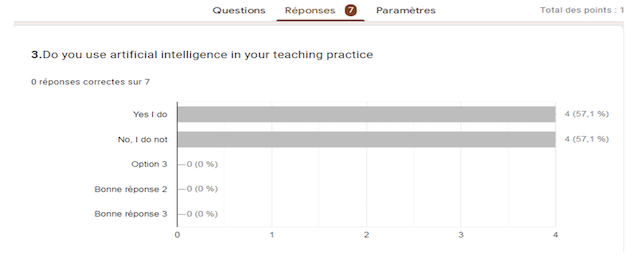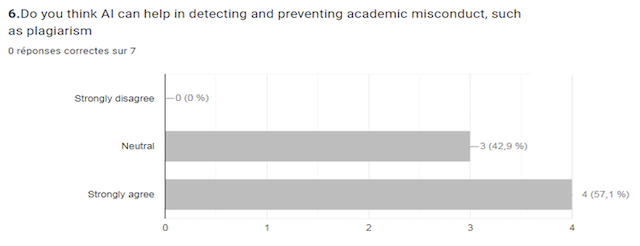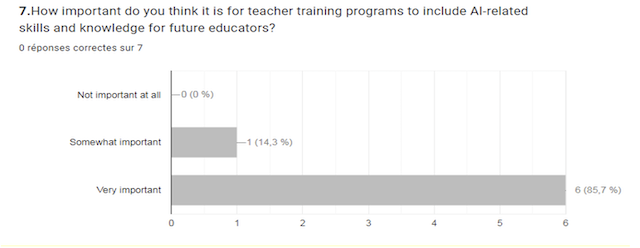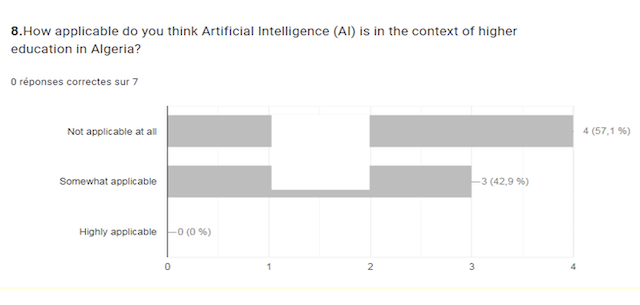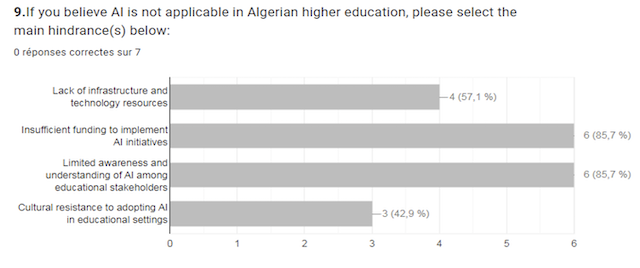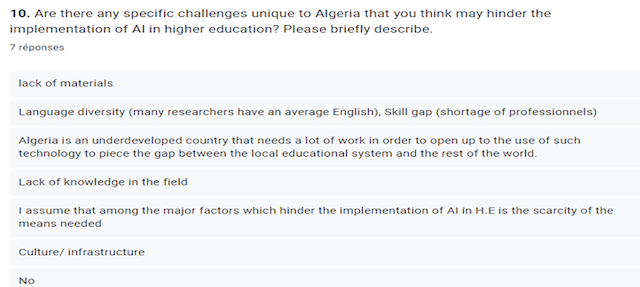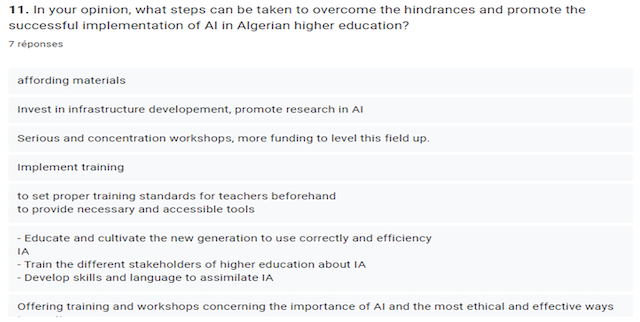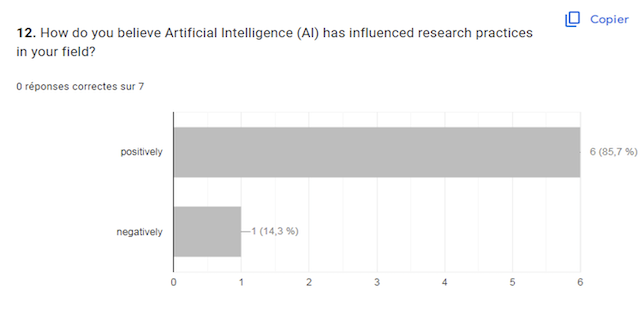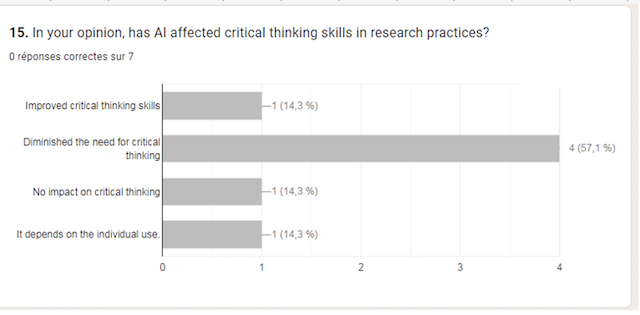Introduction
Artificial Intelligence (AI) has attracted significant attention in recent years, introducing transformative possibilities across various domains, including education. AI’s extensive capabilities have facilitated the improvement of higher education services inside and outside the classroom (Klutka, Ackerly, & Magda, 2019). By leveraging machine learning algorithms and data analysis, AI is set to revolutionize the educational sector, offering unprecedented levels of personalization, automation, and efficiency. It can provide tailored feedback to students, automate administrative tasks like grading, and create immersive virtual learning environments, enhancing the overall educational experience.
This paper aims to explore the current state, applications, and challenges of implementing AI in higher education, with a focus on improving teaching quality and learning outcomes.
Since Alan Turing's foundational work in 1937 and his seminal paper in 1950, AI has evolved significantly. The term "Artificial Intelligence" was officially coined by McCarthy in 1956 during the Dartmouth Conference. Recent studies (Bruck & Crompton, 2023) have identified six main applications of AI in higher education, with three key areas of focus: evaluation and assessment, intelligent tutoring systems, and learning management. AI enables educators to provide automated and individualized feedback, enhances the adaptive capabilities of tutoring systems, and helps in managing student learning processes through advanced data analytics.
1. Definition of AI and Its Relevance to Higher Education
AI is defined as "computing systems capable of engaging in human-like processes such as learning, adapting, synthesizing, self-correction, and complex data processing" (Popenici et al., 2017). It encompasses various techniques, including machine learning, natural language processing, and neural networks, that allow computers to perform tasks traditionally requiring human intelligence. In the context of higher education, AI is used to enhance assessment, provide adaptive learning experiences, and streamline administrative processes. By automating repetitive tasks, AI helps educators focus more on personalized teaching and mentoring, improving the quality of education and fostering a more engaging learning environment.
1.1 Applications and Impacts of AI in Higher Education
The application of AI in higher education offers significant benefits, such as personalized learning, improved student engagement, and efficient resource management. Akinwalere and Yordanov (2018) highlight four main goals: enhancing academic outcomes, increasing access to education, improving retention rates, and reducing costs. Personalized learning experiences, driven by AI, adapt to individual student needs, offering tailored content and timely feedback. This fosters a more student-centered approach and supports innovative teaching methodologies. AI also aids in predictive analytics, enabling educators to identify at-risk students and provide targeted interventions to support their academic success.
-
Evaluation of ChatGPT and AI Language Models : Generative Pre-trained Transformer (GPT) models, such as ChatGPT, represent a significant advancement in AI-driven dialogue systems. These models can be integrated into educational platforms to support academic writing, research, and peer review. Sabzalieva & Valentini (2023) emphasize their utility in providing AI-driven responses, enhancing the efficiency of academic tasks. However, concerns about academic integrity, plagiarism, and the propagation of misinformation persist. These issues underscore the need for clear ethical guidelines and regulatory frameworks to ensure the responsible use of AI in educational contexts.
-
Challenges in Implementing AI in Higher Education: Despite its potential, the integration of AI in higher education faces several challenges, particularly in developing countries like Algeria. Financial constraints, a lack of expertise, and inadequate infrastructure hinder effective implementation. Moreover, ethical concerns related to privacy, data security, and the dehumanization of education present significant obstacles. Machines, while capable of automating tasks, lack the human touch, creativity, and moral judgment essential for nuanced educational processes. Addressing these challenges requires substantial investment in infrastructure, capacity building, and the development of regulatory policies that ensure ethical AI usage in education (Simuka, 2022).
The implementation of AI in higher education offers a promising avenue for enhancing teaching quality, personalized learning, and efficient management of educational processes. However, to fully harness its potential, significant efforts must be made to overcome existing challenges, including financial, ethical, and infrastructural barriers. With adequate policies and frameworks, AI can play a pivotal role in transforming higher education, making it more accessible, efficient, and tailored to individual student needs.
1.2. Ethics and AI Challenges in Algeria
Having previously discussed the pros and cons of AI, what is needed to implement AI in Algeria? How do we achieve a balance between the benefits and risks of AI? Regulation is required through the creation of a global ethics charter, alongside the necessary use of AI tools. Given the situation in Algeria, we should establish a supportive electronic environment, considering that not all teachers and students are proficient in using AI. Additionally, the implementation of AI in Algeria cannot be achieved while relying on outdated traditional methods and curricula. The curriculum should be updated to include high-tech courses and training for both teachers and students on the use of AI. Another important element is the need for advanced computer resources, adequate infrastructure, and addressing the issue of limited internet access in some universities and educational centers. All of this can be costly, especially for developing countries like Algeria. Consequently, to address these issues, Algerian higher education institutions should focus on building partnerships with international organizations.
2. Research Methods
In the summer of 2023, an online survey was conducted to determine teachers' perceptions and readiness for the use of AI in Algerian universities. Artificial intelligence is viewed as a technology that will improve all sectors, including education, and has become essential for citizens of the twenty-first century.
The current study addresses artificial intelligence in its close relation to:
-
Research and the problematic use of paraphrasing tools
-
Teaching and learning
-
Online assessment
-
Cheating and legal issues
Despite the growing debate about AI in higher education, Algerian stakeholders, educators, and researchers remain unclear on how to effectively harness AI to positively impact education. This paper aims to investigate the advantages and disadvantages of AI, as well as teachers' opinions and readiness for its implementation in Algerian higher education. The objectives include conducting a critical narrative literature review of AI applications in the Algerian higher education context and highlighting how AI is specifically used in this sector. The goal is to explore the potential benefits and drawbacks of AI in educational settings and assess teachers' readiness for its gradual adoption in Algerian institutions.
The research hypothesis posits that teachers in Algeria are conservative about the use of AI and are not ready to take this step, possibly due to a lack of knowledge, skills, and training to effectively integrate AI into their teaching practices.
3. Findings and Discussion
The findings and discussion are organized around the following guiding questions:
-
What are the potential applications of artificial intelligence in higher education?
-
How can artificial intelligence improve learning outcomes within higher education?
-
What are the perceptions of university teachers regarding the implementation of AI in higher education?
The first two questions have been thoroughly addressed in existing literature. The third question was explored through a survey distributed to seven university teachers from various universities in Algeria. These teachers were asked questions regarding the impact of AI on education.
Is ChatGPT the end of critical thinking, creativity, and novelty in research? Is it applicable in Algeria? What are teachers' views, and how do they perceive AI and its influence on ethics? How can we benefit from AI, and what dangers might we face? These dangers relate to our dignity and culture. The following section presents the teachers' responses.
The majority of the teachers surveyed are either novices or have been teaching for less than five years. Only one teacher has more than ten years of teaching experience. This is particularly relevant to the implementation of artificial intelligence (AI) in higher education, as teachers with less experience may require more support when adopting new technologies in their classrooms. According to the Technology Acceptance Model (TAM), the perceived ease of use and usefulness of a new technology greatly influence its adoption, especially among less experienced users (Davis, 1989). This suggests that novice teachers might face challenges integrating AI due to a lack of familiarity and confidence in using such tools.
On the other hand, more experienced teachers might have a better understanding of how to integrate new technologies into their teaching strategies, benefiting from their accumulated knowledge and pedagogical skills (Rogers, 2003). However, this does not always guarantee higher proficiency in using emerging technologies like AI, which requires specific digital literacy skills often acquired through recent training.
Interestingly, it is hypothesized that novice teachers might possess more knowledge about the implications of AI, both inside and outside the classroom. This is supported by recent studies showing that younger and less experienced teachers tend to be more open to experimenting with new digital tools, often because they have had more exposure to these technologies during their academic training (Ertmer & Ottenbreit-Leftwich, 2010). Thus, while they may need support in practical implementation, their familiarity with AI concepts could be a valuable asset in its adoption.
Based on the responses provided by the teachers, it appears that they have varying degrees of familiarity with the concept of AI. One teacher reported not being familiar with AI at all, indicating that they may need additional support or training to effectively integrate AI into their teaching practice.
The majority of the teachers (4 out of 7) reported being moderately familiar with AI. This suggests that they have some knowledge or experience with AI but may still require further training and support to use it effectively in their teaching practices. Two teachers reported being very familiar with AI, indicating a high level of knowledge and experience. These teachers could serve as valuable resources for their colleagues who are less familiar with AI.
Overall, the varying degrees of familiarity with AI among the teachers indicate a need for additional training and support to effectively integrate AI into teaching practices.
After reviewing the responses, it appears that four teachers are currently using artificial intelligence (AI) in their classrooms, while three teachers are not. It would be interesting to understand how the four teachers who use AI implement it and the benefits they perceive in their teaching practices. For the three teachers who do not use AI, exploring its advantages and how it can enhance their teaching could encourage its adoption in the future.
Considering the given answers, the use of AI among teachers varies. One teacher reported consistent use of AI, indicating regular integration into their teaching. Three teachers mentioned occasional use, suggesting they incorporate it into their teaching practices but not consistently. Conversely, three teachers indicated they never use AI in their classrooms.
To better understand the reasons behind these usage patterns, a deeper exploration of the experiences and perspectives of both groups—those who use AI occasionally and those who never use it—would be beneficial. This analysis could help identify barriers to more consistent use of AI in teaching practices and explore strategies to support and motivate teachers in embracing AI.
Perceived Benefits of AI in Higher Education
According to feedback gathered, four teachers believe that AI can significantly enhance the quality of higher education, while three teachers think it can only improve it to some extent. The positive responses indicate recognition of AI’s potential, such as automating routine tasks, providing personalized learning experiences, and facilitating communication. The less enthusiastic responses may stem from limitations experienced by the teachers in using AI effectively.
Openness to Using AI for Administrative Tasks
A majority of teachers expressed a willingness to use AI for administrative tasks. Four teachers indicated a high level of openness, while three were somewhat receptive but had reservations about its implementation. Factors influencing this variance may include familiarity with AI, confidence in its use, and perceptions of its benefits and limitations.
Confidence in Using AI Tools for Teaching
Two teachers reported high confidence in using AI tools, likely due to their prior experience and knowledge. Five teachers expressed moderate confidence, suggesting some familiarity but a need for further skill development. This indicates the necessity for ongoing professional development to enhance teachers' proficiency in AI tools.
AI in Preventing Misconduct and Plagiarism
Most teachers (four out of seven) strongly agree that AI can help prevent academic misconduct like plagiarism, likely due to experience with plagiarism detection software. However, for effective implementation, issues of fairness, accuracy, and ethical use must be considered.
Integration of AI-Related Skills in Teacher Training
Six of seven teachers emphasized the importance of including AI-related skills in teacher training programs, highlighting AI's growing role in education. Integrating these tools can enhance student learning experiences, offer personalized instruction, and introduce innovative teaching approaches.
Applicability of AI in Algerian Higher Education
Opinions on AI's applicability in Algerian higher education are divided. Four teachers believe it is not applicable, citing concerns like limited infrastructure and unclear policies, while three see potential in specific tasks. A thorough evaluation and dialogue are necessary to explore AI’s feasibility and potential applications in this context.
Challenges to AI Adoption in Algerian Universities
Teachers identified major barriers to AI integration in Algerian higher education, including insufficient funding, lack of awareness, inadequate infrastructure, and cultural resistance. Despite these obstacles, strategic investments and education could potentially enable the adoption of AI in the future.
Impact of AI on Research Efficiency
Out of the seven surveyed teachers, six viewed AI's impact on research positively, citing increased efficiency, enhanced data analysis, and improved decision-making. However, one teacher raised concerns about ethical issues and potential job displacement. Addressing these concerns while acknowledging AI's positive contributions is crucial.
AI and Creativity in Education
Opinions on AI's impact on creativity were mixed. Four teachers felt that AI enhances creativity by automating repetitive tasks and encouraging experimentation. However, three teachers worried that over-reliance on AI could diminish creativity by reducing the role of human intuition and spontaneity. Balancing AI’s benefits with fostering human ingenuity remains a challenge.
Influence of AI on Social and Soft Skills
Five teachers expressed concern that AI might negatively affect social and soft skills by reducing face-to-face interactions essential for effective communication and collaboration. Two teachers, however, saw AI as a beneficial tool for data analysis and knowledge sharing. A balanced approach is needed to ensure the development of both technical and interpersonal skills.
Effects of AI on Critical Thinking and Creativity
Four teachers believe that AI might hinder critical thinking and creativity by promoting passive consumption of information. One teacher argued that AI could enhance these skills by providing new perspectives, while another saw no significant impact. This divergence underscores the need to harness AI's strengths while promoting independent thought.
Conclusion
In conclusion, as a developing country, Algeria should strive to integrate AI into its educational system, especially in higher education. However, numerous challenges must be addressed, including inadequate infrastructure, high implementation costs, lack of training, language diversity, and cultural factors. Overcoming these barriers might take more than five years, followed by additional time to prepare teachers and students for this transition. Current connectivity issues in Algerian institutions highlight the need for improvement to create a conducive environment for AI adoption.
Achieving excellence in higher education is possible through AI, offering innovative, learner-centric approaches. However, the reality in Algeria remains challenging due to resource limitations. Significant efforts are needed to integrate AI, machine learning, and robotics effectively into the educational system.
-
Declaration of AI Refinement: This research paper underwent language correction using AI-powered tools like Grammarly and Scholar AI Chat to address grammatical and stylistic errors. It is acknowledged that the use of such tools may introduce standardized patterns typical of AI-generated content. However, the intellectual analysis remains entirely the work of the author.
-
Statement of Absence of Conflict of Interest: The authors declare no conflict of interest regarding the findings and recommendations in this academic article.



